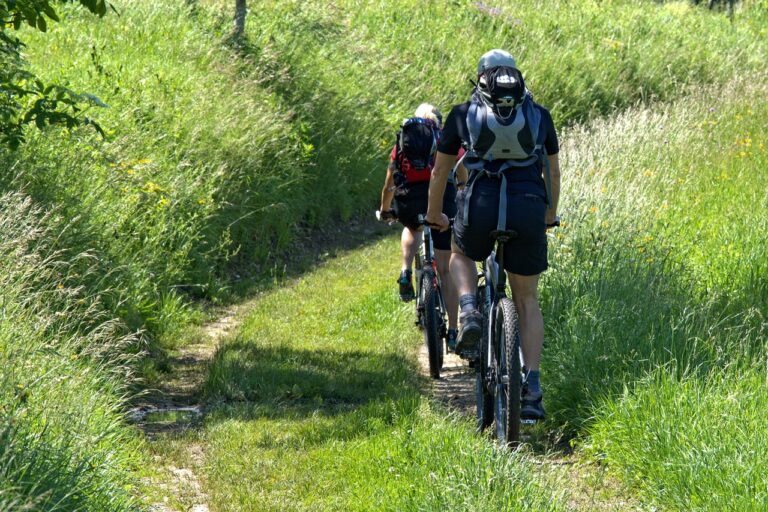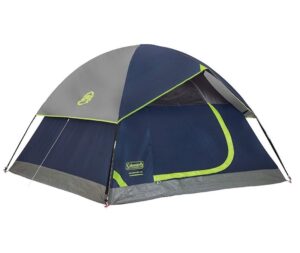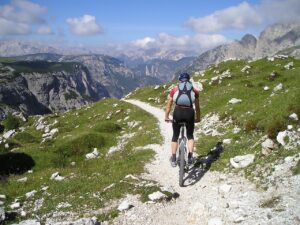A cycling trip along single track trails or remote forest roads might be just what you need to satisfy your adventurous side, whether you have a free weekend, month, or longer. But making a solid plan first can be worthwhile before you pack up and leave. Making the most of your travel time in this way will enable you to have an unforgettable experience.
Planning a Cycling Route
Limit your choices: Consider factors like time, distance, location, and weather to help you focus on the destination.
Create a route: To locate roads and trails you can ride on, use maps, guidebooks, websites, and word-of-mouth. Consider where you will sleep each night as well as how you will get food and water.
Create a GPS track: After choosing the trails and/or roads you want to ride, use an online tool to map out your route. Put that route on your GPS-enabled smartphone or handheld device after you take it.
Ride, and have fun! Consider what went well and not so well, so when you get home, you can design an even better adventure the next time.
Narrow Your Trip Choices
The route options can seem limitless and overwhelming when you first plan a bikepacking trip. Choose your trip parameters to help you focus your search:
Distance vs. time:
These two elements will largely determine where you can travel by bike. When considering time and distance, keep in mind that riding a loaded bike will limit your ability to go as far or as quickly as you otherwise could. The exact speed and distance you can travel depends on a variety of variables, including the terrain, distance, elevation gain, and level of fitness.
How much time you have:
If you only have a weekend available for your trip, you’ll need to decide how many miles you want to ride each day and make sure your route fits within your time constraints. Plan to ride between 20 and 40 miles per day if you’re new to bikepacking and start out cautiously. From there, you can always rise.
How far you want to go:
If you’re determined to ride a route of a specific length, you’ll need to calculate how many miles you can ride each day, which will determine how many days your trip will last. Once more, be safe and aim for 20 to 40 miles per day unless you’re certain you can do more.
Region and aesthetics:
Do you have a favorite area in your state that you’ve always wanted to visit? You can narrow down the trails you want to explore by choosing a destination for your trip. It can also be entertaining to design a trip around a stunning or famous spot, such as a breathtaking view, an old ruin, or a hot spring where you can unwind and soak.
Weather and the season:
Outdoor riding conditions can be very different depending on where you live. Early in the spring, snow may make some trails impassable.
Shuttles:
If you’re taking a point-to-point route that ends somewhere other than where it began, you’ll need to make additional arrangements. Do you have a friend who can pick you up and drop you off? Or is it possible to park a car at each end? If you live somewhere with accessible public transportation, consider how a bus or train might fit into your schedule.
Design a Cycling Route
It’s time to plan your route now that you have some guidelines for the trip you want to organize. There are many approaches you can take in order to accomplish this; here are some ideas:
Decide on a Planned Route
Try to locate a route that has already been designed for cycling if you want to keep things simple. Since you’ll probably be able to find information about trail conditions, mileage, elevation gain or loss, camping, water sources, and more, this can take a lot of the difficult work out of trip planning. A great resource for finding established cycling routes is bikepacking.com.
Making Your Own Cycling Route
Consider creating your own route if there are no well-known clycling routes nearby or if you’re itching to ride something different. Here are a few techniques:
Consult online resources, guidebooks, and maps: These are excellent tools for organizing a cycling trip. You can find paved roads, forest roads, single-track trails, and double-track trails using any of them. Use multiple resources to connect and form a route. Remember, not all roads and trails permit bicycles. For instance, biking is prohibited in wilderness areas that are under federal protection.
The information you’ll probably need, such as trail difficulty, distance, elevation gain, directions, water resources, and trail features, can be found in mountain biking guidebooks and on websites dedicated to the sport.
Speak with residents and other cyclers: To get route recommendations, it’s helpful to speak with locals or other cyclers. Try getting in touch with the nearby ranger districts in the region you want to visit. The most recent information on the state of the trails will be available from the rangers.
Know Where You’re Going to Sleep, Eat and Drink
It’s a good idea to take some time to plan the logistics of sleeping, eating, and drinking while you’re conducting your research.
Sleeping:
It’s a good idea to have a plan in place, even if it’s just a general one, for where you’re going to sleep every night. This can be as formal as making reservations at a campground, hostel, or hotel or as informal as identifying a flat area on a map close to a creek. Before setting up your tent, be aware of the land-use regulations if you intend to camp somewhere other than a designated campground.
When bikepackers refer to “stealth camping,” they typically mean finding a hidden location and keeping your presence a secret. If you decide to do this, make sure you follow the law and request permission before setting up camp on someone’s property (like a farmer’s field).
No matter where you choose to camp, remember to leave no trace.
Eating and drinking:
You can probably fit all the food and water you need on your bike if you’re going on an extended trip. However, once a trip lasts three days or longer, you’ll need to plan how to get more food and drink.
It might be necessary to arrange your route so that you pass through a town with a grocery store, restaurant, or convenience store every few days. If you’ll be in the wilderness, mark lakes, rivers, and streams on your map and bring a water filter. You can meet a friend with additional food or pack lightweight, portable freeze-dried meals.
Define a GPS track
There’s no reason you can’t start riding your route right away if you’re confident using a compass and paper maps for navigation. However, a lot of bikepackers (and other cyclists) prefer to ride with a smartphone or specific GPS device to aid in route finding.
A GPS is useful for showing you where you are and recording your route as you go, but it may be even more useful if you can load a route onto the device before leaving home. This enables you to ride along with turn-by-turn directions and is not dependent on cellphone service.
You need to create a GPX track based on all the research you did to find the trails and roads you want to ride in order to load your route onto your smartphone or GPS device. You can accomplish this using a variety of online tools. Three well-liked and comparatively simple bike-specific options are Ride with GPS, MapMyRide, and bikemap. Create the route by dragging and dropping points on a map. Once finished, download the GPX track and load it onto your smartphone or handheld GPS device.
Your phone contains the route, so you are prepared to ride.
Ride. Have a fun time. Take a lot of photos.
When you get home, reflect on your trip for a while and ask yourself these questions: What did you like? What were you not fond of? Have you properly planned your daily mileage and/or elevation gain? Did you bring the right luggage? What would you change if you could?
When it’s time to organize your next bikepacking adventure, thinking back on your journey can be helpful. You’ll become more adept at creating itineraries that suit your preferences and interests as you make more trips.




